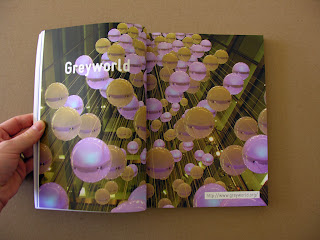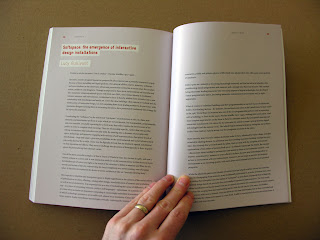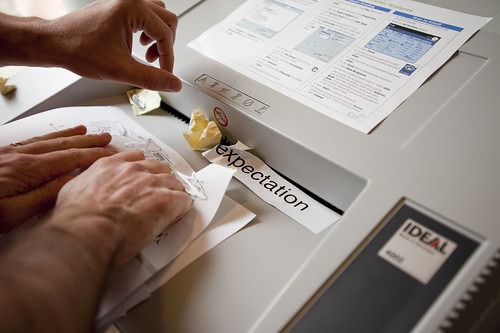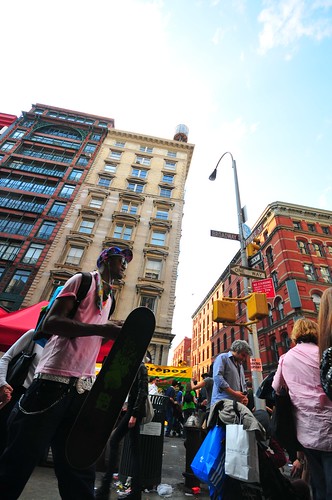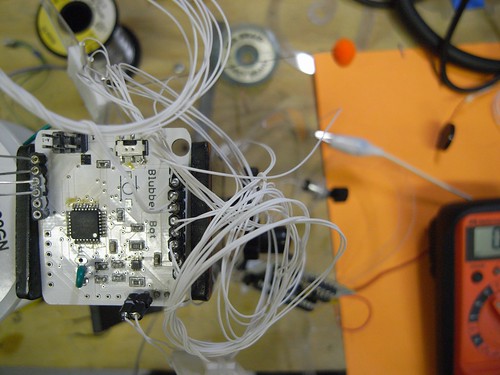
John-Rhys Newman’s exploration of New Measures of Things in a series of conventional measuring instruments that act as kinds of epistemological wrenches, changing perceptions and confusing the traditions of quantification. Very intriguing objects. I’m curious about the history of measurement and quantification. There’s lots there. I find myself knee deep in the muck of Medieval history. More to come.
Want one?
The Near Future Laboratory’s Overseas Bureau of Avuncular Insights and Apropos Turns of Phrase found this clattering off the network’s teletypes — a wonderful short dispatch from Bruce Sterling referring in high-style to the challenges confronting our forward-facing resources for imagining new, near future worlds. Science-fiction has a history; hasn’t always been around. It participates in imagining the future — the title of the essay is this conflation of Design and Fiction, suggestive of this point that fiction can participate in design. But, ultimately, the science-fiction-design trio results in imaginary things. Things that are never hewn beyond the words and the story and the imagination. They are, therefore, fantastic “crap.” Design fiction sits somewhere in between science-fiction and the materialization of the imagination. It is tied more closely to the stuff that appears in the world. You can tell because it resonates closely with either things now, things about to happen, or things that are discussed and activated. Or, the design fiction becomes a reference point — a way of describing something that, oh — some geeks are tooling in the laboratory.
What truly interests me here is the limits of the imaginable.
Design fictions of the best sort are like design & style manuals for making things. They lead to conversations like this — “Yeah, it’s kinda like that thing? The reputation servers in that book, um…Distraction? Oh, you didn’t read it? Well, you should. It’ll help us talk about what we’re trying to do. It’s got some cool things in it.”
What are the constraints to imagining new kinds of future worlds? Writing is constrained by language, which may have been the literati’s excuse for not creating a future imaginary worthy of our time, money and attention to materialize.
Design, by contrast, is less verbal. Design is busily inventing new ways to blow itself apart. Design is taking more risks with itself than literature. That is why contemporary design feels almost up to date, while literature feels archaic and besieged.
Design and literature don’t talk together much, but design has more to offer literature at the moment than literature can offer to design. Design seeks out ways to jump over its own conceptual walls-scenarios, user observation, brainstorming, rapid prototyping, critical design, speculative design. There is even “experience design,” which is surely the most imperial, most gaseous, most spectral form of design yet invented.
Now, talking again? With a more common landscape brought to us via digital networks, digital data, digital communications and sharing? Could that be the effective culture of the Internet? To bring together language and material? Expressive of both in a way. Not just stories, but their material, lived in the world?
Perhaps apropos of the recent Milan Design Week chatter, the way I read this nice compact essay is that the vector cross-product of a failed capitalism with an inability of (design/engineering/science/technoculture-writ-large) to imagine a future-forward equals variously trouble or opportunity. The opportunity being — new kinds of “bricks.” New units of assemblage to create more habitable (broadly — sustainable, creative, articulate, mindful, generous, etc.) future worlds. We need new measures of meaning. New systems of quantification that do not ultimately, in the end, result in an unbalanced equation.
Read the whole thing here. I’ve excerpted my favorite part below. (Well, it’s short enough of an essay that the whole thing can be a favorite part, but this is what this morning’s coffee-sit-down favored.)
We have entered an unimagined culture. In this world of search engines and cross-links, of keywords and networks, the solid smokestacks of yesterday’s disciplines have blown out. Instead of being armored in technique, or sheltered within subculture, design and science fiction have become like two silk balloons, two frail, polymorphic pockets of hot air, floating in a generally tainted cultural atmosphere.
These two inherently forward-looking schools of thought and action do seem blinkered somehow-not unimaginative, but unable to imagine effectively. A bigger picture, the new century’s grander narrative, its synthesis, is eluding them. Could it be because they were both born with blind spots, with unexamined assumptions hardwired in 80 years ago?
There is much thoughtful talk of innovation, of transformation, of the collaborative and the transdisciplinary. These are buzzwords, language that does not last.
What we are really experiencing now is a massive cybernetic hemorrhage in ways of knowing the world.
Even money, the almighty bottom line, the ultimate reality check for American society, has tripped over its own infrastructural blinders, and lost its ability to map value. The visionaries no longer know what to think-and, by no coincidence, the financiers can no longer place their bets.
I scarcely know what to do about this. As Charles Eames said, design is a method of action. Literature is a method of meaning and feeling. Hearteningly, I do know how I feel about this situation. I even have some inkling of what it means.
Rather than thinking outside the box-which was almost always a money box, quite frankly-we surely need a better understanding of boxes. Maybe some new, more general, creative project could map the limits of the imaginable within the contemporary technosocial milieu. Plug that imagination gap.
That effort has no 20th-century description. I rather doubt that it’s ever been tried. It seems to me like a good response to events.
The winds of the Net are full of straws. Who will make the bricks?
Continue reading Who Will Make The Bricks?
which helped me sort out a couple of dangling threads while writing my dissertation — “The Reality Effect of Technoscience”. ((It was, though, my other friend Sarah Jain shoving Latour’s Pandora’s Hope: Essays on the Reality of Science Studies
into my book shelf that really let me feel as though I could, after a 10 year hiatus, finish my dissertation.
which he edited with Greil Marcus. Some good essays in there, especially for me at the time when I was trying to figure out what the heck anthropology was, anyway.




